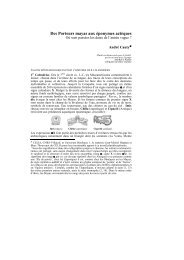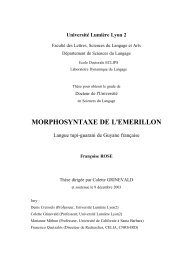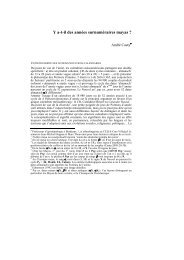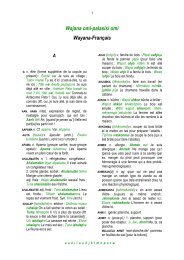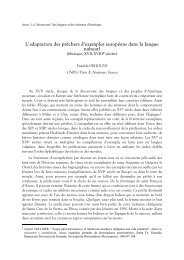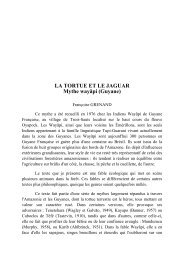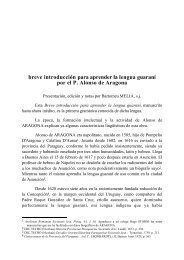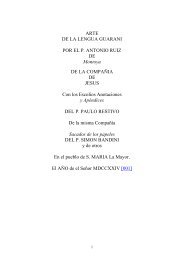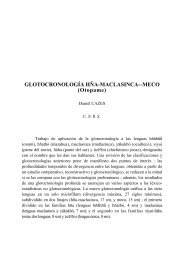The Blue Bird of Ergativity - celia
The Blue Bird of Ergativity - celia
The Blue Bird of Ergativity - celia
Create successful ePaper yourself
Turn your PDF publications into a flip-book with our unique Google optimized e-Paper software.
<strong>The</strong>re are some categories, which at this level <strong>of</strong> discussion we can take asprimitives, which we can define and specifiy the content <strong>of</strong>. <strong>The</strong>re is generalagreement on semantic roles (if not necessarily on a specific set <strong>of</strong> them), inparticular Agent, which in some sense are certainly real, and pragmatic categorieslike topic and focus, which likewise are certainly real, even if we don't reallyunderstand yet what they are. Subject is trickier; the tradition over the lastgeneration <strong>of</strong> seeing it as some kind <strong>of</strong> intersection or amalgam <strong>of</strong> Agent and Topicgives it some real content, but leaks terribly. I think, though, that, followingresearch by Tomlin and others, we can define subject quite neatly in terms <strong>of</strong> thepsychologically unassailable category <strong>of</strong> attentional focus. In spite <strong>of</strong> Dixon'sadmirable efforts in that direction, as far as I can see S, A and O cannot be givencontentful definitions <strong>of</strong> this type.S, A and O are useful etic concepts. Assuming that every language hasintransitive clauses, it follows that S is certainly a descriptive universal. However,the abundant evidence from so-called "Split-S" languages makes it evident that it isno more than that -- there is no universal unitary S category. In fact, as far as I cansee, there is no emic S category in any language. An emic category -- that is, acategory which is actually part <strong>of</strong> the grammar <strong>of</strong> a language -- must be definableby either structural or functional criteria -- ideally both, <strong>of</strong> course, but let us agreethat for now we will settle for one or the other. Of course, in a two-way split Slanguage like Lakhota or Pomo, and even moreso in a three-way split S languagelike Choctaw-Chickasaw, there is no S category whatever. In nominative languages,S arguments are subjects, just as A arguments are, but in a language like Englishthere is no S category apart from Subject -- that is, there are no structural orsemantic/pragmatic criteria by which one can identify intransitive subjects as adistinct subcategory <strong>of</strong> subject. One might argue that in a prototypical ergativeabsolutivelanguage we could define an S category in structural terms as thatargument which shares its morphological properties with O and its syntacticproperties with A, and that might be enough to satisfy us that we have a distinctcategory -- but clearly not a universal one.A and O are a bit more challenging. Assuming that all languages havetransitive clauses, then in any language there will be two kinds <strong>of</strong> transitiveargument. Referring to these by putatively universal labels like Subject and Objector A and O makes the claim -- explicitly asserted by Dixon (1994) -- that everylanguage will identify the same two categories <strong>of</strong> argument within the transitiveclause. <strong>The</strong> essential phenomenon which we need to deal with is that languagesstrongly tend to treat experiencers and agents as a natural class (DeLancey 1996).15



